The day before the beginning of Spring is known as Setsubun. Importance is placed on this day because it is when the past year changes to the new year according to the 24 seasonal term solar calendar. Shrines and Temples throughout Japan celebrate this day and have Setsubun festivals. The Setsubunsai at Sengen Shrine (known as Osengen-san by the locals), has a long history and has also been listed as an intangible folk-cultural asset by the city of Shizuoka. You can experience the traditional custom of Mame-maki (Throwing of the Beans) and the Oniyarabo stick that is used to knock on doors to rid the city of bad demons.
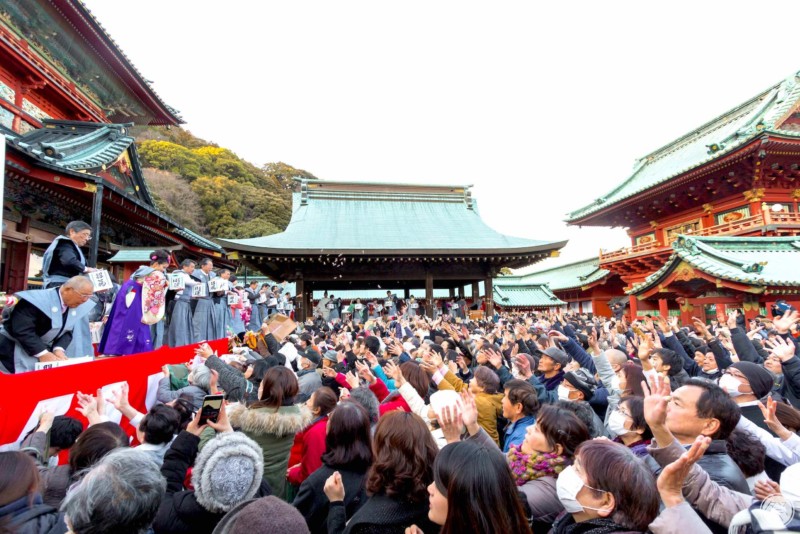
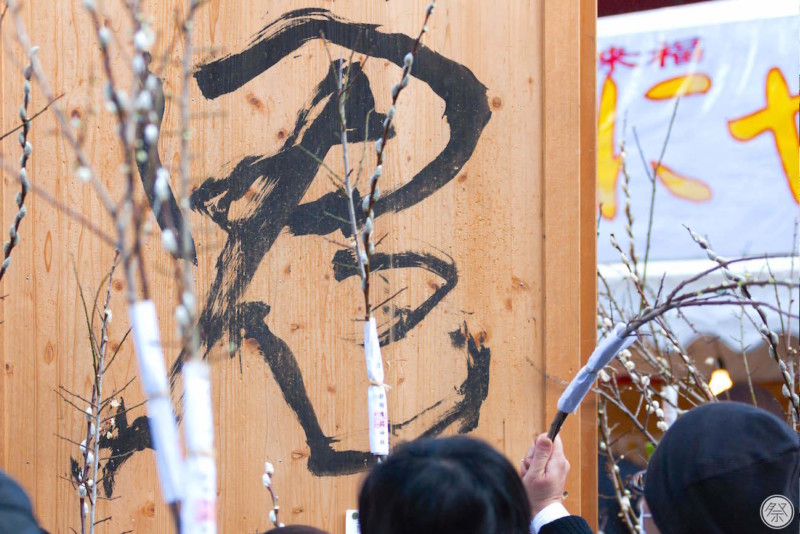
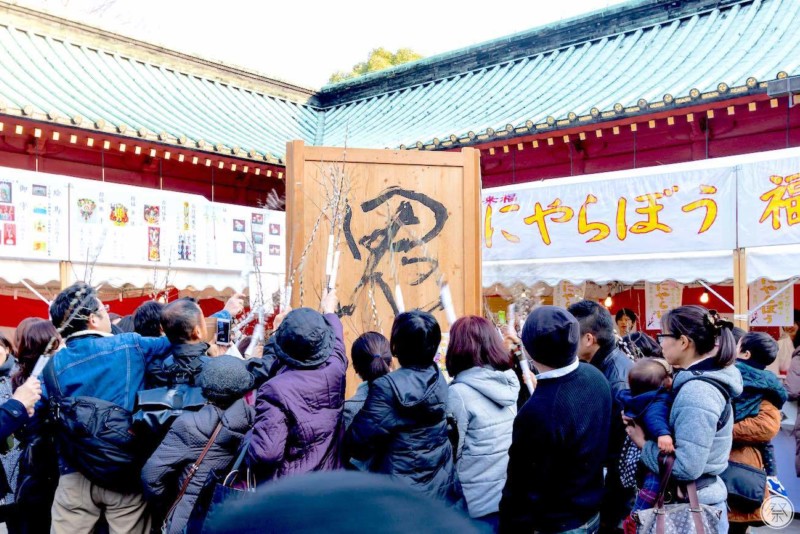
The "Oniyarai" Ritual of Shizuoka City's Sengen Shrine is an intangible folk-cultural asset and is passed from generation to generation as a special ritual. The Shinto priests play the taiko drums, a gong, and bells while people indebted to the shrine as well as the general public use the Oniyarabo to hit away on a door that has the word "Oni", or demon, on it for a full 5 minutes as a way to drive away bad omens.

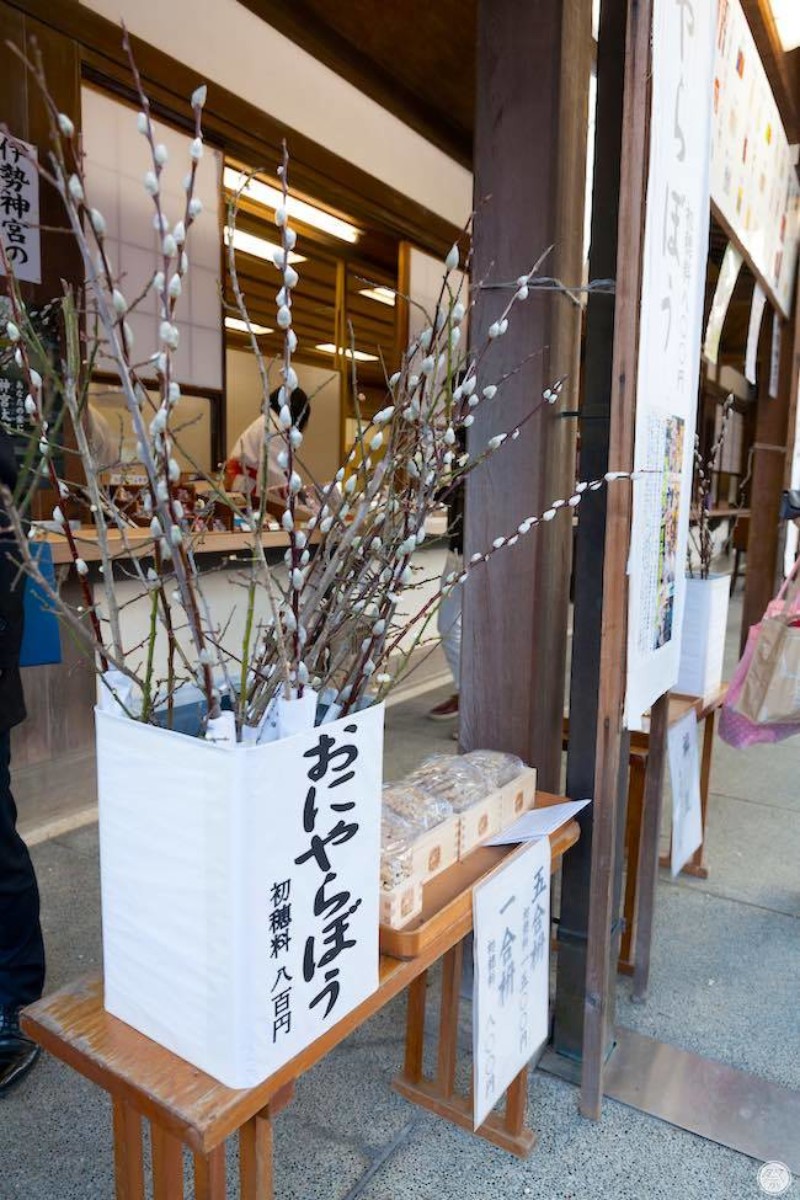
An Oniyarabo is made of young branches of plum trees and willow trees woven together by hemp and is a shorter version of its original name Oni-yarai-bo, or Demon-chase off-stick. There is an offering fee of 800 yen for the Oniyarabo. You can participate and use it in the hitting of the door at the shrine's ritual, or bring it home and use it to ward off bad demons around your household by hitting your own door.
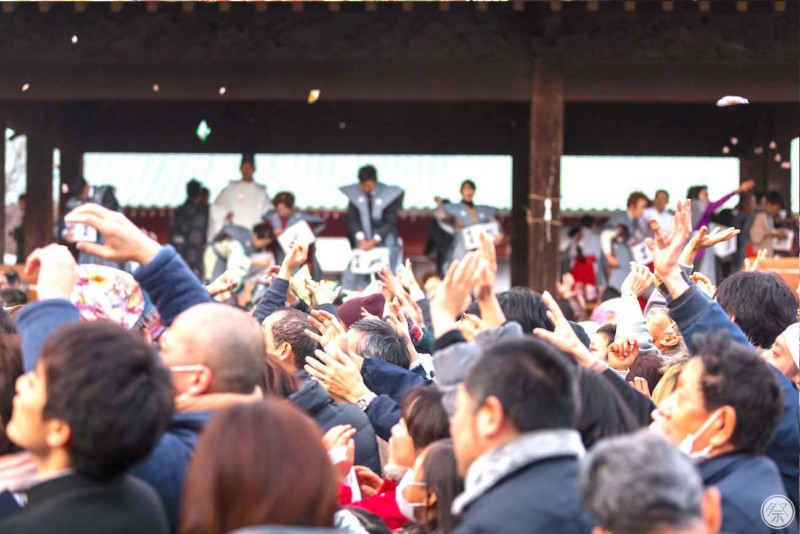
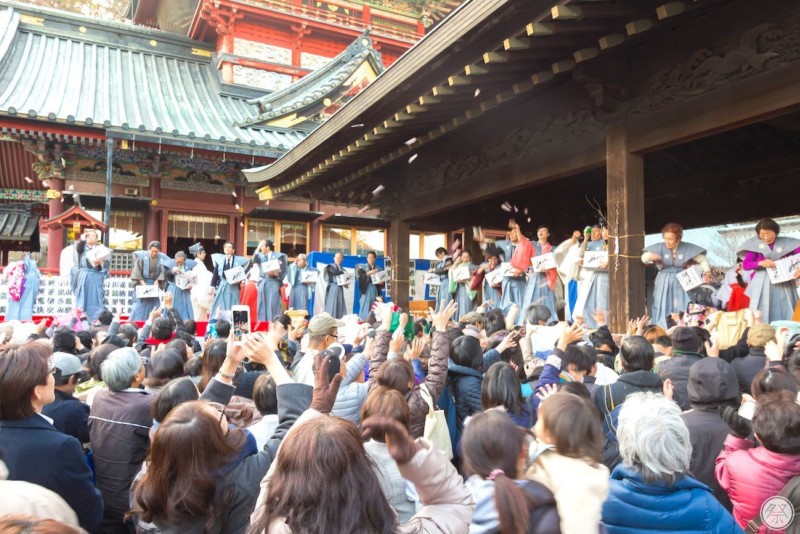
This Mame-maki ritual is performed by the Shinto priests and the local men and women who were born on the year with the same zodiac sign as the current year. Slightly different from the normal Mame-maki that is held in the households throughout Japan, snacks and mochi (pounded rice cakes) are also thrown and scattered about. Feel the passion of the locals as they crowd and reach out for the treats. Also at Sengen Shrine, they do what is called a Takara-maki (Takara means treasure, or lottery) where beans are scattered along numbers written on paper. Those who catch these special ones can trade them in for prizes after the event is finished. Grand prizes await a special few. Though getting excited during the events is common, please be careful of injuries while enjoying yourself. Special children only zones are also provided.
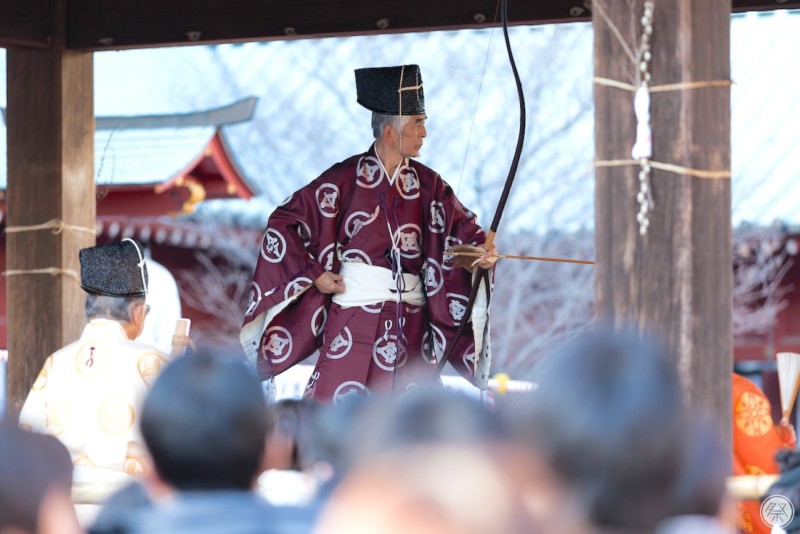

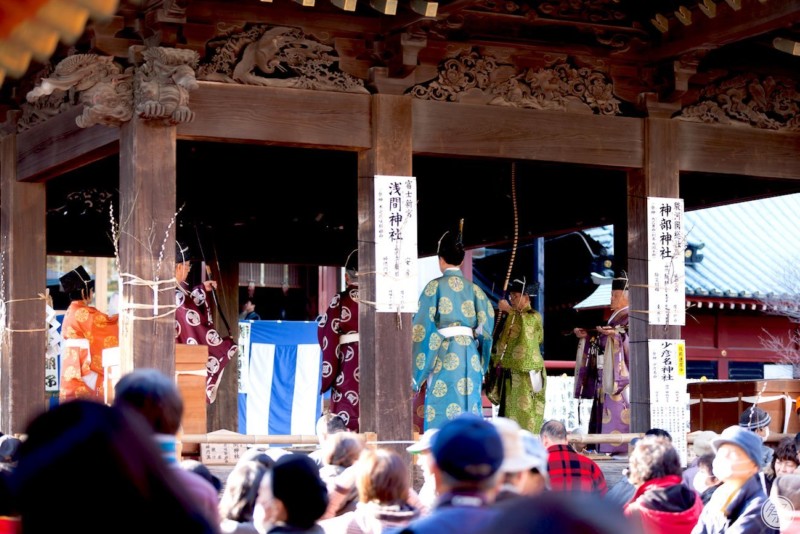
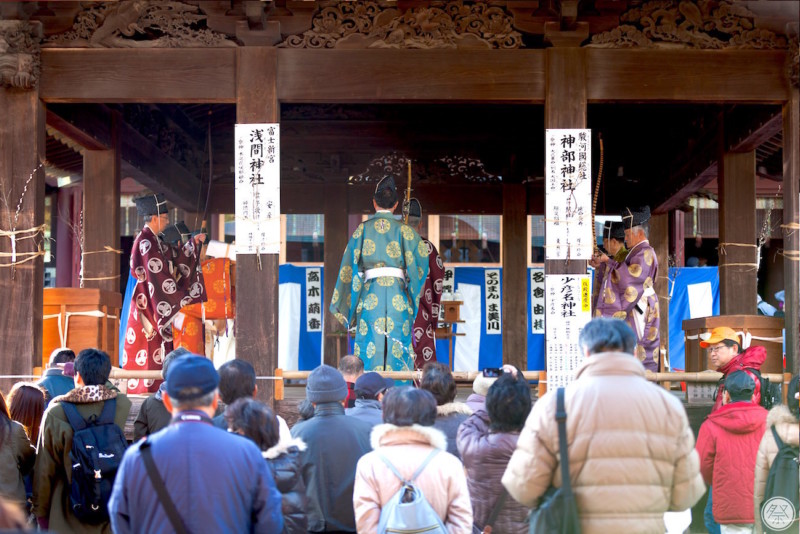
In the beginning of the festival, upon a special dance platform, a bad-omen-cleansing dance involving the sounding of a bow string is performed at the Hikime Meigen ceremony. We strongly recommend you take in the sacred atmosphere that marks the beginning of the Setsubunsai. As the shrine grounds fill with silence, the locals become excited for the oncoming Mame-maki.
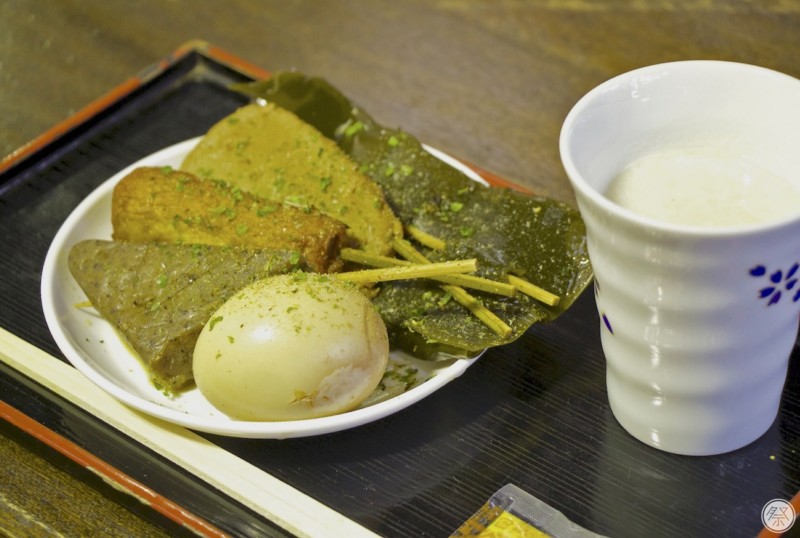

Though it doesn't snow in Shizuoka with its mild climate, it does get fairly cold. Inside of the shrine grounds you can find warm Hitoyo-sake that you can enjoy along with the Shizuoka signature dish, Oden. You have to give it a try. Hitoyo-sake refers to the sweet sake (Amazake) which is also given as an offering to the deity of the shrine. The Eho-maki, a large sushi roll-like food, is eaten on Setsubun while the eater is facing the lucky direction of that year and stays quiet until the whole roll is gone. It might just be a good and fun idea to try eating this rare festive sushi.
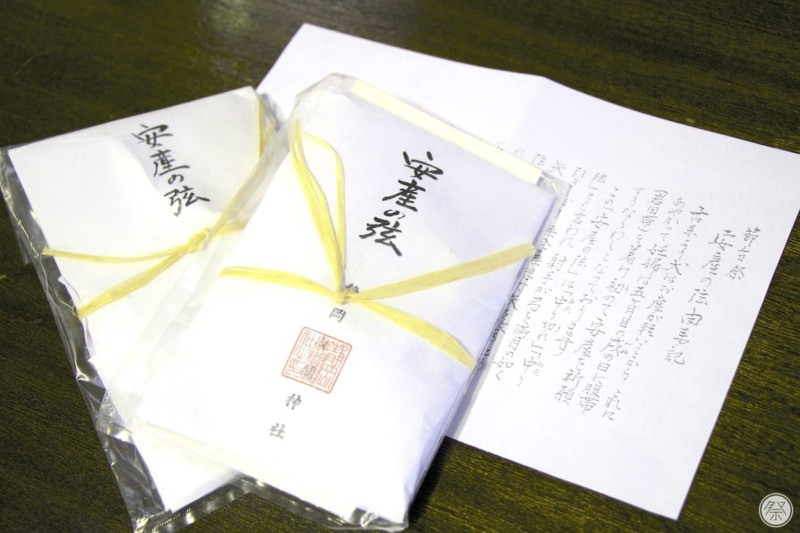
When the festival comes to an end, look forward to the good luck charm (in this case a string) that is said to bring a happy and healthy birth to the soon-to-be parents. It is handed out only on this day. It can be used by wrapping it around the body wrap/waist of the mother for it to work its charms. If you or anyone is expecting, please be sure to receive one. (numbers limited)
Shoes are strictly forbidden in the Shrine and its hallways
Please do not touch the Shrine
Please be mindful of the stone lanterns
Access
Access to Shizuoka City
JR Tokaido Line, Tokaido Shinkansen, Shizuoka Station
Festival Location
Address: 102-1, Miyagasakicho, Aoi Ward, Shizuoka City, Shizuoka Prefecture
[Nearest Station]
From Shizuoka Station, take the Shizutetsu Just Line Bus Company at:
Bus stop 9, Abe Line or Miwa/Oya Line, 8min, get off at the Akai Torii Sengen Jinja Iriguchi, 190 yen (children are 100 yen)
Bust stop 10, Ando Junkan Line (Nakacho Mawari), 8min, get off at Akai Torii Sengen Jinja Iriguchi or Sengen Jinja, 190 yen (children are 100 yen)
Sumpu Roman Bus Line, roughly 30min, get off at Sengen Jinja or Akai Torii Sengen Jinja Iriguchi, bus fair 100 yen (children are 50 yen) for all destinations.
The Sumpu Roman Bus is a light bus that loops around the outside of the Sumpu Castle wall and more.
Sightseeing around the surrounding areas of Sengen Shrine from bus windows is a nice and pleasant way to view